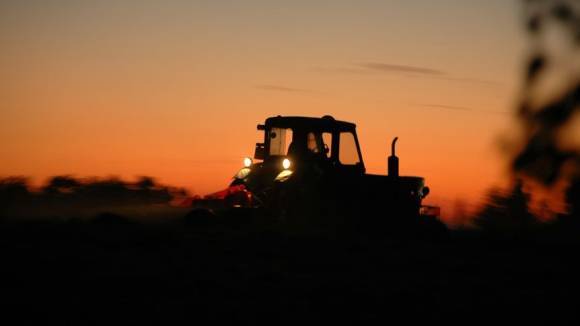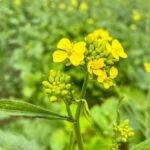Main Points In Hindi (मुख्य बातें – हिंदी में)
-
कृषि में चुनौतियाँ और एआई का महत्व: आधुनिक कृषि को ग्लोबल वार्मिंग, सीमित कृषि योग्य भूमि और बढ़ते कीटों के प्रकोप जैसी गंभीर चुनौतियों का सामना करना पड़ रहा है। इस संदर्भ में, आर्टिफिशियल इंटेलिजेंस (एआई) कीट नियंत्रण में सुधार करने के लिए एक प्रभावी समाधान प्रदान करता है।
-
संक्रमण की पहचान और सटीक उपचार: एआई-संचालित कैमरे और सेंसर संक्रमण की शीघ्र पहचान करके किसानों को नुकसान को कम करने में मदद करते हैं। इसके अलावा, एआई कीट पैटर्न का विश्लेषण कर सटीक कीटनाशक अनुप्रयोग की सिफारिश करता है, जिससे पर्यावरणीय प्रभाव घटता है और लागत को कम करने में मदद मिलती है।
-
उन्नत तकनीकों का उपयोग: मशीन इंटेलिजेंस, ड्रोन, और इंटरनेट ऑफ थिंग्स (IoT) जैसे उन्नत उपकरण, कीट प्रबंधन में महत्वपूर्ण भूमिका निभाते हैं। ये तकनीकें किसानों को वास्तविक समय में कीट गतिविधि पर नजर रखने और त्वरित प्रतिक्रिया देने में सक्षम बनाती हैं।
-
आवश्यक चुनौतियाँ: एआई के एकीकरण में डेटा विश्वसनीयता, उच्च लागत और मानवीय निरीक्षण की आवश्यकता जैसी चुनौतियाँ हैं। सटीक भविष्यवाणियों के लिए सटीक और व्यापक डेटा की आवश्यकता होती है, और छोटे किसानों के लिए उच्च प्रारंभिक लागत एक बड़ी बाधा हो सकती है।
- भविष्य की दिशा: एआई और अन्य उन्नत तकनीकों का समन्वय कृषि को और अधिक टिकाऊ और प्रभावशाली बनाने में मदद करता है। एकीकृत कीट प्रबंधन (आईपीएम) रणनीतियों के माध्यम से, विज्ञान आधारित दृष्टिकोण कृषि की उत्पादकता और पर्यावरणीय संतुलन को बनाए रखने में सहायक हो सकता है।
Main Points In English(मुख्य बातें – अंग्रेज़ी में)
Here are 5 main points extracted from the text regarding the role of Artificial Intelligence (AI) in modern pest management:
-
Challenges in Modern Agriculture: Contemporary agriculture faces significant challenges such as climate change, limited arable land, and increasing pest infestations. AI is presented as a powerful solution to improve pest control by enhancing accuracy and efficiency.
-
Proactive Pest Detection: AI-enabled cameras and sensors allow for rapid identification of pest outbreaks, which helps minimize damage before it spreads. This technology enables precise pesticide application, reducing environmental harm and promoting healthier crops.
-
Cost Efficiency and Safety: AI-driven systems can identify threats to crops more quickly and accurately than traditional methods, reducing the need for blanket pesticide use. This not only cuts costs but also enhances worker safety by minimizing chemical exposure through automated applications.
-
Integration of Smart Technologies: The integration of AI with other advanced technologies like drones and IoT (Internet of Things) facilitates real-time monitoring of pest activity, leading to timely interventions and sustainable pest control strategies.
- Challenges to AI Implementation: Despite the advantages, there are hurdles to incorporating AI in pest management, including data reliability issues, high costs for small farms, and the necessity for skilled human oversight to interpret AI-generated data and make final treatment decisions.


Complete News In Hindi(पूरी खबर – हिंदी में)
आधुनिक कृषि को तीव्र चुनौतियों का सामना करना पड़ रहा है, जिसमें ग्लोबल वार्मिंग प्रभाव, सीमित कृषि योग्य भूमि और बदलती जलवायु और वैश्विक व्यापार के कारण बढ़ते कीटों का प्रकोप शामिल है। लेखक और पारिस्थितिकीविज्ञानी, एल्डो लियोपोल्ड ने बुद्धिमानी से टिप्पणी की: “कृषि विज्ञान मुख्य रूप से नए कीटों के उद्भव और उनके नियंत्रण के लिए नई तकनीकों के उद्भव के बीच की दौड़ है।” चूँकि खेती में कीटों की बढ़ती चुनौतियों का सामना करना पड़ रहा है, आर्टिफिशियल इंटेलिजेंस (एआई) सटीकता और दक्षता के साथ कीट नियंत्रण में सुधार करके एक शक्तिशाली समाधान प्रदान करता है।
संक्रमण की शीघ्र पहचान करके, एआई-संचालित कैमरे और सेंसर इसके फैलने से पहले क्षति को कम करने में मदद करते हैं। इसके अलावा, एआई सटीक कीटनाशक अनुप्रयोग को सक्षम बनाता है, जिससे पर्यावरणीय नुकसान कम होता है और फसलें स्वस्थ होती हैं। यह तकनीकी-अग्रेषित दृष्टिकोण किसानों का समय और संसाधन बचाता है और पारंपरिक, रासायनिक-भारी तरीकों के बजाय पर्यावरण-अनुकूल समाधानों को बढ़ावा देकर टिकाऊ कृषि का समर्थन करता है। एआई की डेटा अंतर्दृष्टि के साथ, कीट प्रबंधन प्रतिक्रियाशील कार्यों से सक्रिय रणनीतियों में स्थानांतरित हो सकता है, जिससे खेती में बेहतर भविष्य का मार्ग प्रशस्त हो सकता है। आइए AI द्वारा प्रदान किए जाने वाले लाभों पर करीब से नज़र डालें।
आधुनिक कीट नियंत्रण में एआई के लाभ
आर्टिफिशियल इंटेलिजेंस पारंपरिक तरीकों की तुलना में विशिष्ट लाभ प्रदान करते हुए, कीट प्रबंधन को नया आकार दे रहा है। शुरुआत के लिए, एआई-संचालित कृषि निगरानी प्रणाली फसल के खतरों का तेजी से और अधिक सटीक रूप से पता लगा सकती है। थर्मल सेंसर और कैमरों से सुसज्जित, ये सिस्टम गर्मी, ध्वनि और गति के आधार पर आक्रामक प्रजातियों की पहचान करते हैं, जो दृश्य निरीक्षण से परे एक छलांग है जो अक्सर शुरुआती संकेतों को याद करते हैं। ए स्मार्ट कृषि मंच एआई डेटा का उपयोग करने से किसानों को यह देखने में मदद मिलेगी कि समस्या बनने से पहले क्या हो रहा है।
कृत्रिम बुद्धिमत्ता सिर्फ संक्रमण का पता नहीं लगाती; यह अधिक लक्षित प्रतिक्रियाओं को सक्षम बनाता है। एल्गोरिदम कीट पैटर्न का विश्लेषण करते हैं और सटीक उपचार स्थानों का सुझाव देते हैं, जिससे कंबल कीटनाशक के उपयोग की आवश्यकता कम हो जाती है। यह दक्षता न केवल लागत में कटौती करती है बल्कि पर्यावरणीय प्रभावों को भी कम करती है, जो आधुनिक खेती में महत्वपूर्ण है।
उदाहरण के लिए, मशीन इंटेलिजेंस से लैस ड्रोन खेतों में घूम सकते हैं, संक्रमण क्षेत्रों का पता लगा सकते हैं और तेजी से, न्यूनतम हस्तक्षेप की अनुमति दे सकते हैं। इस त्वरित प्रतिक्रिया समय का मतलब है फसल का नुकसान कम होना, संसाधनों और राजस्व दोनों की बचत। इसके अतिरिक्त, कीट प्रबंधन में स्मार्ट तकनीक अधिक स्वचालित अनुप्रयोगों के माध्यम से रसायनों के संपर्क को सीमित करके श्रमिकों के लिए सुरक्षा को बढ़ावा दे सकती है।
संक्षेप में, फसल सुरक्षा में एआई केवल प्रतिक्रिया के बारे में नहीं, बल्कि स्मार्ट रोकथाम के बारे में है। दूरस्थ फसल निगरानी, सटीक लक्ष्यीकरण और डेटा-संचालित अंतर्दृष्टि के संयोजन से, एआई किसानों और कीट नियंत्रण टीमों को एक कदम आगे रहने और टिकाऊ, दूरदर्शी तरीके से उपज की सुरक्षा करने के लिए सशक्त बनाता है। कृत्रिम बुद्धिमत्ता वास्तव में उपज सुरक्षा में कैसे सहायता कर सकती है? आइए विभिन्न तरीकों पर नजर डालें।
परिवर्तनकारी कीट प्रबंधन: एआई-संचालित दृष्टिकोण
पूर्वानुमानित विश्लेषण को बढ़ाकर, पहचान प्रक्रियाओं को स्वचालित करके और एकीकृत कीट प्रबंधन (आईपीएम) की सुविधा प्रदान करके कृत्रिम बुद्धिमत्ता फसल सुरक्षा में एक प्रमुख खिलाड़ी बन गई है। एक उल्लेखनीय अनुप्रयोग पूर्वानुमानित विश्लेषण है, जहां एआई संभावित संक्रमण का पूर्वानुमान लगाने के लिए ऐतिहासिक मौसम के पैटर्न और कीट व्यवहार का मूल्यांकन करता है। यह “प्रारंभिक चेतावनी प्रणाली” कमजोर फसलों के लिए विशेष रूप से फायदेमंद है, जो किसानों को कीड़ों के बढ़ने से पहले हस्तक्षेप करने में सक्षम बनाती है।
इसके अलावा, कृत्रिम बुद्धिमत्ता वास्तविक समय में कीट निगरानी में भी उत्कृष्ट है। स्वस्थ और संक्रमित पौधों के बीच अंतर करके, एआई से लैस ड्रोन और सेंसर किसानों को समस्याओं का जल्द पता लगाने में मदद करते हैं, जिससे कीटनाशकों का उपयोग कम हो जाता है। आईपीएम को मशीन इंटेलिजेंस के साथ एकीकृत करने से स्थिरता बढ़ती है, सटीक डेटा के आधार पर जैविक और रासायनिक नियंत्रणों का मिश्रण होता है, एक ऐसी विधि जो “कम स्प्रे, अधिक रणनीति” है।
अंत में, “स्मार्ट तकनीक” एप्लिकेशन फेरोमोन ट्रैप जैसे उपकरणों के साथ दूरस्थ खेत की निगरानी तक विस्तारित होते हैं जो सेंसर के रूप में भी काम करते हैं। ये रचनात्मक समाधान सटीक, टिकाऊ कीट नियंत्रण की दिशा में एक कदम का प्रतिनिधित्व करते हैं, जिससे किसानों को रासायनिक निर्भरता को कम करते हुए उपज की रक्षा करने की अनुमति मिलती है। संक्षेप में, AI केवल संक्रमण को प्रबंधित करने में ही मदद नहीं करता है; यह कीट प्रबंधन को सटीकता की कला में बदल देता है। कीट नियंत्रण में एआई के उपयोग से संबंधित चुनौतियाँ भी हैं। आइए इन मुद्दों की जाँच करें।
कीट नियंत्रण में एआई: संबोधित करने योग्य प्रमुख चुनौतियाँ
जबकि कीट नियंत्रण में कृत्रिम बुद्धिमत्ता प्रभावशाली लाभ का वादा करती है, इस तकनीक को एकीकृत करना बाधाओं के बिना नहीं है। एक प्राथमिक चुनौती डेटा विश्वसनीयता है। एआई उद्योग विशेषज्ञ इनुपा बंडारा कहती हैं, “डेटा एआई की रीढ़ है,” इस बात पर जोर देते हुए कि असंगत डेटा त्रुटिपूर्ण भविष्यवाणियों और प्रबंधन को जन्म दे सकता है।
एआई सिस्टम फसल के खतरों की सटीक भविष्यवाणी और पहचान करने के लिए सटीक, व्यापक डेटासेट पर भरोसा करते हैं। जैसा कि शोधकर्ता एम. डेमिरल और एनए कुमराल ने कहा है, “जलवायु परिवर्तन के कारण, मौजूदा कीटों का प्रकोप बढ़ रहा है या वे उन क्षेत्रों में मुख्य कीट बन गए हैं जहां पहले वे समस्या पैदा नहीं करते थे।” जलवायु परिवर्तन के कारण पर्यावरणीय बदलावों के साथ, एआई एल्गोरिदम को सटीकता बनाए रखने के लिए लगातार अनुकूलन करना होगा।
इसके अतिरिक्त, उच्च लागत विशेष रूप से छोटे खेतों और व्यवसायों के लिए बाधा उत्पन्न करती है। जबकि बड़े पैमाने के संचालन में एआई-संचालित उपकरण खर्च हो सकते हैं, छोटी संस्थाएं प्रारंभिक निवेश के साथ संघर्ष करती हैं। पहुंच में यह असमानता कीट नियंत्रण में व्यापक रूप से एआई को अपनाने में बाधा बन सकती है, खासकर विकासशील कृषि बाजारों में।
मानवीय निरीक्षण आवश्यक है, क्योंकि कृत्रिम बुद्धिमत्ता शक्तिशाली होते हुए भी अचूक नहीं है। गलत सकारात्मक या नकारात्मक संभव हैं, जिसका अर्थ है कि एआई-जनित डेटा की व्याख्या करने और अंतिम उपचार निर्णय लेने के लिए प्रशिक्षित तकनीशियन आवश्यक हैं। स्मार्ट तकनीक मानव प्रयास को बढ़ाती है लेकिन इसे प्रतिस्थापित नहीं करती है, जिससे अच्छी तरह से समन्वित मानव-एआई वर्कफ़्लो की आवश्यकता पैदा होती है। अन्य कौन सी अत्याधुनिक प्रौद्योगिकियाँ फसल सुरक्षा प्रथाओं को बढ़ा सकती हैं? आइए जानें.
कीट प्रबंधन समाधान में भविष्य की तकनीक
मशीन इंटेलिजेंस के अलावा उन्नत प्रौद्योगिकियाँ, फसल के खतरों के प्रबंधन में बहुत व्यावहारिक साबित हो रही हैं। इंटरनेट ऑफ थिंग्स (IoT) सबसे आगे है, जो स्मार्ट सेंसर और कैमरों के साथ दूरस्थ फसल निगरानी की अनुमति देता है जो वास्तविक समय में कीट गतिविधि को ट्रैक करते हैं। IoT डिवाइस, जैसे सेंसर वाले बैट स्टेशन, आक्रामक प्रजातियों का पता चलने पर ऑपरेटरों को सूचित कर सकते हैं, जिससे प्रारंभिक पहचान और प्रतिक्रिया में सुधार होता है।
ड्रोन हवा से बड़े क्षेत्रों का सर्वेक्षण करके और जमीन से नज़रअंदाज़ किए जा सकने वाले संक्रमणों की पहचान करके भी योगदान दे रहे हैं। ये ड्रोन कैमरे और थर्मल इमेजिंग से लैस हो सकते हैं, जिससे वे फसलों को परेशान किए बिना संक्रमण समस्या वाले क्षेत्रों का पता लगाने के लिए आदर्श बन जाते हैं।
एकीकृत कीट प्रबंधन (आईपीएम) इन प्रौद्योगिकियों को टिकाऊ प्रथाओं के साथ जोड़ता है, कीटनाशकों के उपयोग को कम करता है और पर्यावरण-अनुकूल तरीकों को प्रोत्साहित करता है। वैज्ञानिक एम. डेमिरल और एनए कुमराल सुझाव देते हैं: “खेत में कीटों की निगरानी करना, कीटों की सबसे संवेदनशील अवस्था का निर्धारण करना, सबसे उपयुक्त नियंत्रण रणनीति (कीटनाशक या अन्य वैकल्पिक तरीकों) पर निर्णय लेना और इसे सर्वोत्तम समय में लागू करना आवश्यक है।” … परिणामस्वरूप, आईपीएम को गहन क्षेत्र अवलोकन, प्रशिक्षित कर्मचारियों और डेटा खनन की आवश्यकता होती है। यह “टेक-मीट-नेचर” दृष्टिकोण न केवल फसल सुरक्षा को अधिक कुशल बनाता है बल्कि इसे स्वस्थ पारिस्थितिकी तंत्र के लिए विज्ञान-आधारित रणनीति में भी बदल देता है।
कीट नियंत्रण में कृत्रिम बुद्धिमत्ता और उन्नत तकनीक का उपयोग कृषि को एक नवीन और टिकाऊ उद्योग में बदल रहा है। हालाँकि चुनौतियाँ बनी हुई हैं, लेकिन सटीकता और न्यूनतम पर्यावरणीय प्रभाव के साथ फसलों की रक्षा करने की क्षमता निर्विवाद है। इन उपकरणों के साथ, खेती का भविष्य उज्ज्वल, कुशल और पारिस्थितिक रूप से मजबूत है।
Complete News In English(पूरी खबर – अंग्रेज़ी में)
Modern agriculture is facing significant challenges, including the effects of global warming, limited arable land, and increasing pest outbreaks due to changing climate and global trade. Author and ecologist Aldo Leopold wisely remarked, “Agricultural science is primarily a race between the emergence of new pests and the emergence of new technologies for their control.” As farming deals with rising pest challenges, Artificial Intelligence (AI) offers a powerful solution by enhancing pest control with precision and efficiency.
By quickly identifying infestations, AI-driven cameras and sensors help minimize damage before it spreads. Additionally, AI enables precise application of pesticides, reducing environmental harm and keeping crops healthy. This technology-driven approach saves farmers time and resources while promoting environmentally friendly solutions over traditional, chemical-heavy methods, thus supporting sustainable agriculture. With AI’s data insights, pest management can shift from reactive measures to proactive strategies, paving the way for a better future in farming. Let’s take a closer look at the benefits that AI offers.
Benefits of AI in Modern Pest Control
Artificial Intelligence is reshaping pest management, providing distinct advantages over traditional methods. For starters, AI-powered agricultural monitoring systems can detect crop threats more quickly and accurately. Equipped with thermal sensors and cameras, these systems identify invasive species based on heat, sound, and motion—far surpassing visual inspections that often miss early signs. A smart agriculture platform utilizing AI data helps farmers understand what’s happening before a problem escalates.
AI not only detects infestations but also enables targeted responses. Algorithms analyze pest patterns and suggest exact treatment locations, reducing the need for blanket pesticide applications. This efficiency not only cuts costs but also minimizes environmental impacts, a crucial aspect of modern farming.
For example, drones equipped with machine intelligence can fly over fields, identify infested areas, and allow for swift, minimal-intervention responses. This quick turnaround means less crop loss and savings in both resources and revenue. Moreover, smart technology in pest management can enhance worker safety by limiting chemical exposure through more automated applications.
In summary, utilizing AI in crop protection is not just about responding to infestations; it’s about smart prevention. The combination of remote crop monitoring, precise targeting, and data-driven insights empowers farmers and pest control teams to stay ahead and safeguard yields sustainably and foresightedly. How exactly can artificial intelligence assist in yield protection? Let’s explore the various methods.
Transformative Pest Management: AI-Driven Approaches
By enhancing predictive analysis, automating identification processes, and facilitating Integrated Pest Management (IPM), AI has emerged as a key player in crop protection. A notable application is predictive analytics, where AI evaluates historical weather patterns and pest behavior to forecast potential infestations. This “early warning system” is particularly beneficial for vulnerable crops, enabling farmers to intervene before pests have a chance to multiply.
Additionally, AI excels in real-time pest monitoring. By distinguishing between healthy and infected plants, drones and sensors equipped with AI assist farmers in identifying issues early, thereby reducing pesticide usage. Integrating IPM with machine intelligence enhances sustainability by providing a mix of biological and chemical controls based on precise data—an approach characterized by “less spraying, more strategy.”
Finally, “smart tech” applications extend to tools like pheromone traps, which can also serve as sensors for remote field monitoring. These innovative solutions represent a step towards precise, sustainable pest control, allowing farmers to protect yields while reducing chemical reliance. In short, AI doesn’t just help manage infestations; it transforms pest management into a precise art form. However, there are challenges associated with AI in pest control. Let’s examine these issues.
Major Challenges of AI in Pest Control
While AI in pest control offers impressive benefits, integrating this technology comes with challenges. A primary concern is data reliability. AI industry expert Inupa Bandara states, “Data is the backbone of AI,” emphasizing that inconsistent data can lead to flawed predictions and management. AI systems rely on accurate, comprehensive datasets for precise forecasting and identification of crop threats. As researchers M. Demiral and N.A. Kumaral note, “Due to climate change, the frequency of existing pest outbreaks is increasing or they are becoming principal pests in areas where they previously caused no issues.” With environmental changes caused by climate change, AI algorithms must continually adapt to maintain accuracy.
Additionally, high costs pose barriers, especially for small farms and businesses. While large-scale operations can invest in AI-powered tools, smaller entities struggle with initial investments. This disparity in access could hinder widespread adoption of AI in pest management, particularly in developing agricultural markets.
Human oversight remains crucial, as artificial intelligence, though powerful, is not infallible. False positives or negatives are possible, necessitating trained technicians to interpret AI-generated data and make final treatment decisions. Smart technology augments human effort but does not replace it, creating a need for well-coordinated human-AI workflows. What other cutting-edge technologies can enhance crop protection practices? Let’s find out.
Future Technologies in Pest Management Solutions
Besides machine intelligence, advanced technologies are proving highly practical in managing crop threats. The Internet of Things (IoT) is at the forefront, enabling remote crop monitoring through smart sensors and cameras that track pest activity in real-time. IoT devices, such as sensor-equipped bait stations, can notify operators when invasive species are detected, improving early identification and response.
Drones also contribute by surveying large areas from the air and identifying overlooked infestations from the ground. These drones can be equipped with cameras and thermal imaging, making them ideal for pinpointing problem areas without disturbing crops.
Integrated Pest Management (IPM) combines these technologies with sustainable practices, reducing pesticide use while promoting environmentally friendly methods. Scientists M. Demiral and N.A. Kumaral suggest: “Monitoring pests in the field, determining the most vulnerable stages of pests, deciding on the most suitable control strategies (pesticides or other alternative methods), and applying them at the right time are essential.” As a result, IPM requires rigorous field observation, trained personnel, and data mining. This “tech-meets-nature” approach not only enhances crop protection efficiency but also transforms it into a science-based strategy for a healthy ecosystem.
The use of artificial intelligence and advanced technology in pest control is turning agriculture into a modern and sustainable industry. While challenges persist, the ability to protect crops with precision and minimal environmental impact is undeniable. With these tools, the future of farming looks bright, efficient, and ecologically sound.








